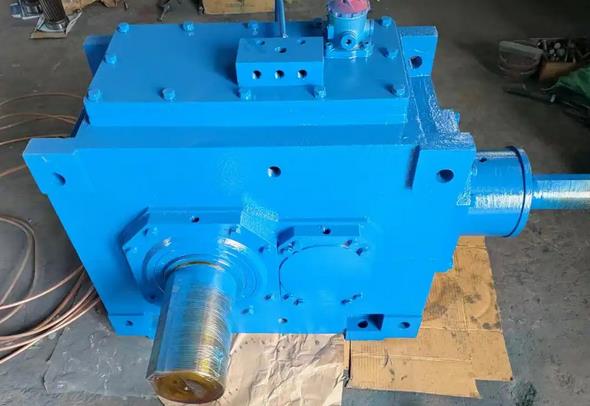How to determine the reduction ratio and accuracy of the planetary reducer?
1、 Selection of speed ratio for purchasing planetary reducers:
When selecting a planetary reducer, the first step is to clarify the reduction ratio. After determining the reduction ratio, please multiply the rated torque of the servo motor you have chosen by the reduction ratio. The resulting value should be smaller than the rated output torque of similar reducers provided in the product sample, and also consider the overload capacity of the driving motor and the maximum working torque required in practice. The required maximum working torque should be less than twice the rated output torque.
2、 Selection of size specifications for purchasing planetary reducers:
After meeting the above conditions, please choose the smallest reducer, as smaller reducers have a relatively lower cost. If you don't have enough space to connect the motor reducer in a straight line, you can also choose a corner type reducer, which can turn the torque by 90 degrees.
3、 Selection of precision (return clearance) for purchasing planetary reducers:
Next, we need to consider the return clearance of the planetary reducer. The smaller the return gap, the higher the accuracy and cost. Users need to choose a series of reducers that meet their accuracy requirements.
4、 The consideration of service life when purchasing planetary reducers:
Also consider lateral/radial forces and average lifespan. Reducers with large lateral/radial forces have high reliability in installation and use, and are not prone to problems. The actual service life can be calculated according to the software provided by the manufacturer. Usually, its average lifespan far exceeds the lifespan of the equipped servo motor.
5、 Other precautions for purchasing planetary reducers:
After meeting the above indicators, you can choose a reducer that matches your motor in terms of installation size, shaft diameter, and input flange based on the product sample. Finally, you also need to consider the weight of the motor you are equipped with. A reducer is only allowed to be paired with motors less than a certain weight. If the motor is too heavy and runs for a long time, it will damage the output flange of the reducer.
In the reducer family, planetary reducers are widely used in servo, stepper, DC and other transmission systems due to their small size, high transmission efficiency, wide deceleration range, and high accuracy. Under the premise of ensuring precision transmission, it is mainly used to reduce speed, increase torque, and reduce the rotational inertia ratio of load/motor.
The key technical parameters for measuring the performance of a speed reducer are: reduction ratio, average lifespan, rated output torque, return clearance, full load efficiency, noise, lateral/radial force, and operating temperature.
Reduction ratio: The ratio of output speed to input speed.
Series: The sun gear and its surrounding planetary gears form an independent reduction gear system, such as a gearbox with only one gear system, which is called the "first stage". To obtain a larger reduction ratio, multi-level transmission is required, with a reduction ratio ranging from 3 to 512.
Average service life: refers to the continuous working time of the gearbox at the highest input speed under rated load.
Rated output torque: refers to the allowable output torque during long-term operation under rated load. The maximum output torque is twice this value.
Return clearance: When the output end is fixed and the input end is rotated clockwise and counterclockwise to produce ± 2% of the rated torque at the output end, there is a small angular displacement at the input end of the reducer, which is called the return clearance. The unit is "arc minute".
Lubrication method: The planetary reducer does not require lubrication throughout its entire use period.
Full load efficiency: Refers to the transmission efficiency of the gearbox under maximum load conditions. It is a key indicator for measuring reducers, as reducers with high full load efficiency generate less heat and overall performance is good.
Noise: The unit is decibels (dB) A. This value is measured at an input speed of 3000 rpm, without load, at a distance of one meter from the gearbox.
Working temperature: refers to the allowable temperature of the gearbox under continuous and periodic working conditions.


